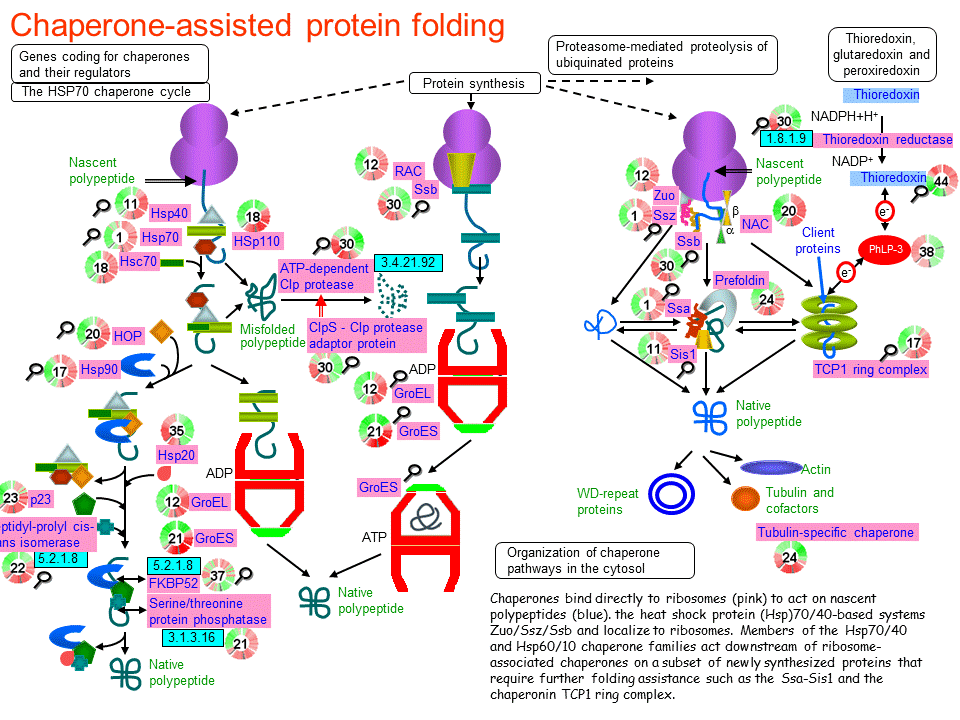
Availability of chaperone assistance at critical junctures, for example through thermotolerance, ensures cell viability even when cellular functions would otherwise be overwhelmed. Many chaperones are known as heat-shock proteins (Hsp), alluding to their overexpression under stress conditions, although their action is also required under normal cell growth. Chaperonins are distinguished among the molecular chaperone family by the presence of a cavity that offers a productive environment for protein folding, thus preventing unwarranted inter protein interactions, which could occur in the crowded cellular environment. Chaperonin molecules in bacterium prevent such off-pathway reactions and promote protein folding through spectacular ATP-driven cycles of binding and releasing substrate proteins (SPs). Protein folding in the cell is not always a spontaneous process due to unproductive pathways of misfolding and aggregation. Understanding the chaperonin mechanism and the specific proteins they rescue during the cell cycle is important not only for the fundamental aspect of protein folding in the cellular environment, but also for effective therapeutic strategies. Chaperonins are implicated in bacterial infection, autoimmune disease, as well as protein aggregation and degradation diseases. Sequential conformational changes within a CCT ring are observed, perhaps promoting domain-by-domain substrate folding.

By contrast, the less well understood group II chaperonins (CCT in Eukarya and thermosome/TF55 in Archaea), assist a selected set of substrate proteins. Group I chaperonins (GroEL homologues in eubacteria and endosymbiotic organelles), recognize a large number of misfolded proteins non-specifically and operate through highly coordinated cooperative motions. Two distinct mechanisms of annealing action have been described.
#CHAPERONIN FREE#
Random disruptions of these low energy conformations result in higher free energy, less folded, conformations that can stochastically partition into the native state.

Misfolded conformations are associated with low energy minima in a rugged energy landscape. The theory associated with the iterative annealing mechanism, which incorporated the conformational free energy landscape description of protein folding, quantitatively explains most, if not all, the available data. Dramatic large-scale conformational changes, that take place during ATP-driven cycles, allow chaperonins to bind misfolded proteins, encapsulate them into the expanded cavity and release them back into the cellular environment, regardless of whether they are folded or not. Chaperonins are large oligomeric complexes, with unusual seven fold symmetry (group I) or eight/nine fold symmetry (group II), that form double-ring constructs, enclosing a central cavity that serves as the folding chamber. Protein folding assistance by the chaperonin machinery is obligatory in vivo for a subset of proteins in the bacterial proteome.

1Department of Chemistry, University of Cincinnati, Cincinnati, OH, United States.


 0 kommentar(er)
0 kommentar(er)
